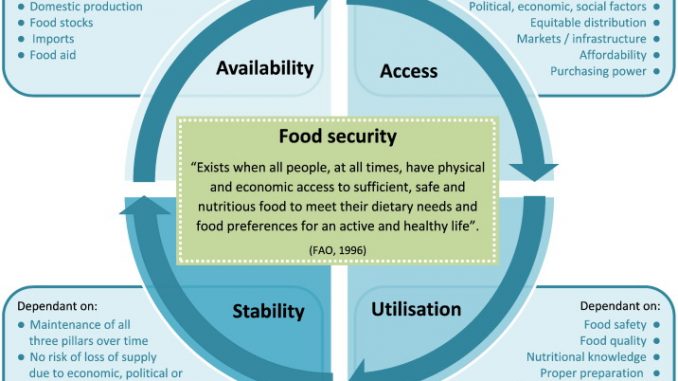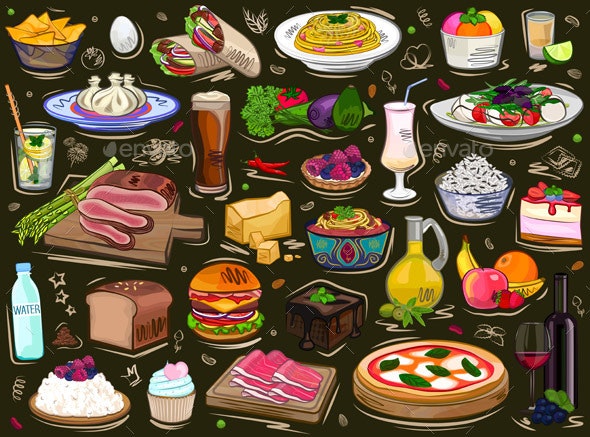Introduction
In 2015, the United Nations Member States adopted the 2030 Agenda for Sustainable Development, which provided 17 "Sustainable Development Goals (SDGs)" that need to be achieved by all countries developed and developing [1]. These goals include the work towards ending poverty and world hunger, implementing actions towards solving climate change, improving education, and increasing economic growth. World hunger is a significant crisis prevalent globally but predominantly exists in Africa, the Middle East, and Asia. The 4th Annual Global Report on Food Crises (GRFC 2020), facilitated by the Food Security Information Network and their partners cite 135 million people in the IPC/CH Phase 3 or above [2]. According to the United States Agency for International Development, this is acute hunger up to starvation. With the onset of the Covid-19 pandemic at the end of 2019, the United Nations put out a Global Humanitarian Response Plan that detailed steps on how the virus would be fought in developing countries and who was most at risk. One of the most at-risk population groups is "people suffering from chronic diseases, undernutrition including due to food insecurity, lower immunity, certain disabilities, and old age" [3]. Food security is already essential to the well-being of a population, and the effects of Covid-19 are sure to be long-lasting.

Before going any further, food security needs to be defined. Food security, according to the US Agency for International Development, means having "at all times, both physical and economic access to sufficient food to meet dietary needs for a productive and healthy life. A family is food secure when its members do not live in hunger or fear of hunger"[8]. The predominant cause of food insecurity is poverty, as people don't have enough to buy food to support their families. Today, more than 800 million people live in food insecurity, going to bed hungry every night. [8]. To help stem the tide of world hunger, several different organizations work in unison to fight the ever-increasing problem, including the World Food Programme, the Food and Agriculture Organization of the United Nations (FAO), the International Fund for Agricultural Development (IFAD), and the United Nations Children's Fund (UNICEF) amongst others.




Next, when understanding food security specifically, it is crucial to understand the so-called pillars of food security that are referenced throughout this research. The pillars that makeup food security, as defined by the FAO in their Global Strategic Framework for Food Security and Nutrition, are Availability, Access, Utilization, and Stability [9]. Per the FAO, food availability is defined as "the availability of sufficient quantities of food of appropriate quality, supplied through domestic production or imports (including food aid)" [7]. Many different considerations are made regarding food availability, including production, distribution, and transportation. In many countries, for example, Japan does not possess the natural resources required to produce enough to sustain food security, so other methods such as imports and trade must be utilized [10]. Next, according to the FAO, food access is defined as "access by individuals to adequate resources for acquiring appropriate foods for a nutritious diet" [7]. Typically, most causes of hunger are not due to a scarcity of food but an "inability to access available food, usually due to poverty"[10]. Thus developing counties with issues of poverty also have major food security and hunger crises. Next, utilization, as defined by the FAO, is how the food is used once it is obtained, typically, "through adequate diet, clean water, sanitation, health care to reach a state of nutritional well-being" [7]. This arises in the forms of food safety, cultural preferences, and education. Finally, stability, as defined by the FAO, is a combination of availability and access, meaning households "should not risk losing access to food as a consequence of sudden shocks (e.g., an economic or climatic crisis) or cyclical events (e.g., seasonal food insecurity)". Events like droughts (climatic crisis) and locusts (seasonal) affect stability, which in turn affects other pillars of food security. Below is a graphic of food security and the four pillars for reference.

Next, as food security has been defined and the four pillars were described, it is important to understand how to measure levels of food security. Many families around the world are dealing with food security but at different levels. Those dealing with extreme famine versus those dealing with not being able to eat what they want for dinner are both dealing with food security issues but at different levels. There are a number of different scales to measure food security developed by some of the top researchers in the field. The FAO developed Food Insecurity Experience Scale (FIES) Survey Module as a way of gathering more information on the prevalence of food insecurity across various nations. According to the FAO, these eight questions "focus on self-reported food-related behaviors and experiences associated with increasing difficulties in accessing food due to resource constraints." [5]. Surveys containing these questions go out to families regularly. The data can be aggregated, and a better picture of the current state of food security in a particular region can be visualized.

Once survey data is consolidated, the severity of the food security crisis (or lack thereof) can be assessed. Using the Integrated Food Security Phase Classification (IPC), a tool developed to assess the nature and severity of the crisis in Somalia by the FAO, is one of five levels are assigned to the crisis [11]. According to the IPC's technical manual, the first phase, Minimal, means that most households have continuous access to an acceptable quantity and quality of food and are reasonably resilient to any shocks [12]. The second phase, Stressed, means that households can "maintain adequate food consumption but cannot afford some essential non-food expenditures" [11]. The third phase, Crisis, generally implies gaps in food consumption and above-average malnutrition. The fourth phase, Emergency, is a more severe version of the crisis phase, where gaps in food consumption are significant, and malnutrition is very high, with mortality occurring more often. Finally, the fifth phase, Famine, is "extreme lack of food with starvation, death, destitution, and extremely critical acute malnutrition evident" [11]. The different phases of food security are illustrated below.

This research aims to understand how certain disasters are affecting food security. As mentioned previously, several different factors affect food security, especially if those factors directly affect one of the pillars of food security. For example, war and drought would affect stability, poverty would affect access, and a lack of education or cultural differences would affect utilization. However, the most prevalent and ongoing disaster is Covid-19, which permeates every aspect of daily life. From the news to wearing masks to the interruptions of everyday life, Covid-19 has affected everyone on this planet. Therefore, this research will look at the effect of Covid-19 on food security and try to determine the number of potential impacts. Mostly, this research will try to figure out how Covid-19 affects food security and whether/how Covid-19 has accelerated food security issues around the world.
To explore how Covid-19 will affect food security, the following questions will be answered in this research. Each question will be addressed and answered with the backing of data in the conclusion.
Important Questions
- How is Covid-19 affecting food security in the United States? This is the first of two broad questions being answered in this study.
- How has Covid-19 affected food security across the Globe? This is the second of two broad questions being answered in this study.
- What are the predominant concerns of Covid-19 on food security according to experts?
- How have other disasters affected food security? Specifically, disasters such as the Ebola epidemic, Droughts, and Locusts affect food security?
- Do disasters affect certain indicators over others?
- Has Covid-19 affects certain food security indicators more than others?
- Given the effect of Covid-19 on food security, is the 2030 goal set by the UN ever going to be reached?
- Given the effect of Covid-19 on the food supply, are pre-pandemic levels ever going to rebound?
- Can the effects of Covid-19 be isolated? This question is important for developing countries since there are already massive hunger crises in many countries due to climate and economic factors (includings locusts)
- Are certain groups of people disproportionally affected by the effects of Covid-19 on the food supply? What are the breakdowns?
